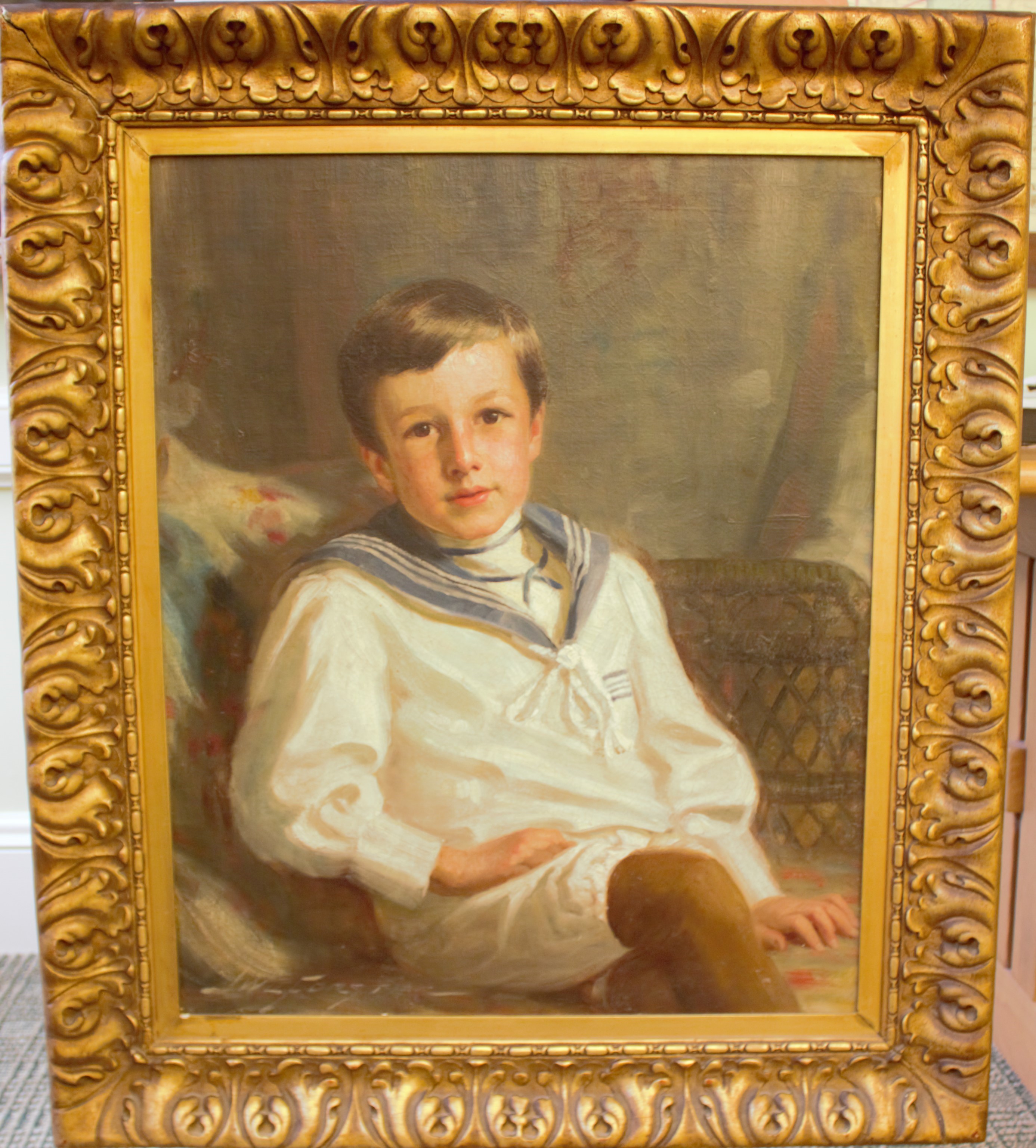By Cecelia Hooper, Intern
The museum recently acquired a portrait of the acclaimed author Eric Stowe Hatch (1902-1973) through the generous donation of his son, Eric K. Hatch. This portrait will be on view Litchfield History Museum’s Helga J. Ingraham Memorial Library (7 South Street, Litchfield). Depicting Hatch at seven years old, the painting was completed around 1909 and painted either at his parents’ house on Park Avenue in New York City, or at their secondary residence in Cedarhurst, Long Island.

The artist of the piece was John Wycliffe Lowes Forster (1850-1938), a well-known portrait painter from Canada. He began his apprenticeship at nineteen, and a decade later studied for three years in Paris. A member of the Ontario Society of Artists and the Royal Canadian Academy, his body of work includes multiple prominent subjects, including the Emperor and Empress of Japan in 1920. The museum holds four other of his paintings.
While the museum already held a military uniform of Hatch’s, likely from the First Litchfield Artillery Regiment, detailed information about his life was missing from our databases. We gathered much of his story from his son, who donated the portrait, as well as from contemporary articles, obituaries, and census records. Many interesting tidbits turned up—Hatch never finished college, and even within his family there was debate on whether he was born in 1901 or 1902.

This research was done as part of the intake process of the portrait, through interactions with the donor, and as our Curator decided whether the painting would be a good fit for the Litchfield Historical Society. It was also done throughout the accession process, while we cataloged the piece, and during label writing.
Eric Stowe Hatch was born in New York to May Hatch and Frederick Hatch, who owned a stock brokerage firm. Eric Hatch enlisted in the State National Guard in 1918, and was an original staff writer for the New Yorker. A prolific writer, Hatch was the author of over twenty books and multiple screenplays, one of which was My Man Godfrey, a novel twice made into successful films he helped script.

Both Eric Hatch and his wife, E. Constance DeBoer, served in World War II in prominent positions. In 1954 they moved to Litchfield and Eric, who was a radio enthusiast, purchased WBIS radio station and operated it together with Constance. They had two sons, one of whom is the donor of the portrait.
In 1963, Hatch co-wrote the article “Let Freedom Really Ring” which inspired congressional Concurrent Resolution 25, passed only four months after the article was published. The Resolution involved symbolically ringing the Liberty Bell thirteen times at 2:00 p.m. on July 4th. In the same year, he conceived of the First Litchfield Artillery Regiment, which was officially acknowledged in 1965. Later, he was named chairman of both the Connecticut Historical Commission and the American Bicentennial Commission of Connecticut. He died in 1973 in Litchfield.
While Eric Hatch did not live in Litchfield when the portrait was painted, this is still an important interpretive piece for the museum. Not only does it align with the other Forster paintings in the collection, but it offers a look into the past of an exceptional Litchfield resident. Eric Hatch was a central community member, and remembering him at all ages aligns with the mission of the LHS. His work with the Artillery Regiment was very impactful and it is still in existence today, participating regularly in community events. Though he did not live to see the bicentennial, his work as a historian and chairman of the aforementioned commissions connects directly with the values of the LHS, particularly as the 250th anniversary approaches. Hatch made a tangible impact on both Litchfield and the wider United States that still survives to this day.